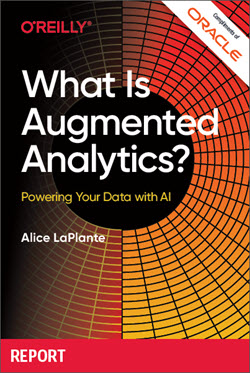
What Is Augmented Analytics? Powering Your Data with AI
September 30, 2019
Businesses are collecting ever-larger volumes of data—structured and unstructured alike. IDC predicts that the “global datasphere” will grow from 33 zettabytes (ZB) in 2018 to 175 ZB by 2025. Businesses that figure out how to make decisions using all this data—those that are “data driven”—will come out ahead, but traditional analytics solutions will take businesses only so far.
Augmented analytics is the latest way to think about data and analytics. It includes embedding artificial intelligence (AI), often in the form of machine learning and natural language processing (NLP), into traditional analytics. It is vastly different from traditional analytics or business intelligence (BI) tools because these AI technologies are always working in the background to continuously learn and enhance results.
In this report, we precisely define what augmented analytics is, explain best practices for deploying augmented analytics, and show how you can use augmented analytics practically within real-world case studies.